Miscellaneous Musings & Opinions (2020)

"Hello, Suckers!" This was the tagline Texas Guinan, an aging flapper with a salty repartee who acted as MC at several speakeasies in the 1920s, used to greet customers. Called "the queen of New York nightlife," she peddled bottles of scotch for $25 per and pitchers of water for $2 each.
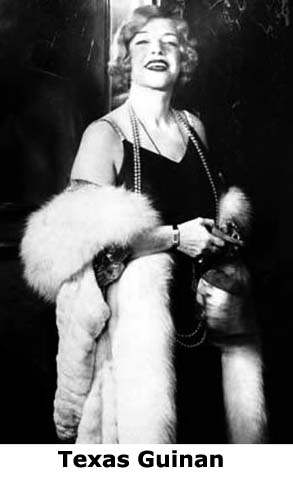
Now that Congress has passed the $2.5 trillion combo China virus and omnibus spending bill, do you feel that the ghost of Miss Guinan is calling to you? Do you have any sense you've been cheated? Well, you should. Consider this: Members of Congress got paid $130,000 to spend 9 months arguing about whether we deserve $600.
Ever get the feeling you've been cheated?
$900 billion of the bill was for virus relief. Question: What is $900 billion divided by 330 million Americans? Answer: $2,727. But you're still only getting $600, sucker.
Included in the omnibus bill is $135 million to Burma, $85.5 million to Cambodia, $1.4 billion for an Asia Reassurance Initiative Act, $130 million to Nepal $10 million for gender studies in Pakistan $500 Million for border security at the Jordan-Syrian border, including a wall (while defunding our wall and ICE programs in the U.S.) and other nonsense big and small, including a human rights bill focused on Tibet, the establishment of two new Smithsonian museums - a Women's History Museum and Museum of American Latinos - and a provision on "doping" and other regulations in horse racing.
I believe that we are too broke to afford foreign aid. If these foreign nations are our "friends," why don't they do something for us once in a while? At least buy us a drink. Or two. Back in 2014 - long before he became president, Donald Trump once tweeted, "I hope we never find life on other planets because there's no doubt that the U.S. Government will start sending them money!"
As for the coronavirus bill, 70% of the bill will go to political donors, special interests, environmental lobbyists, K-Street groups who wrote the bill, foreign interests, Wall Street and corporate beneficiaries.
President Trump has demanded that Congress increase the individual payment to $2,000 and cut the pork, especially aid to foreign nations. On Sunday, President Donald Trump signed the $2.3 trillion pandemic relief and spending bill after reaching an agreement with Congress over stimulus checks, Section 230, and voter fraud. Trump's signing of the bill, which includes a $900 billion covid-19 relief package, means a partial government shutdown is now averted, while financial aid for Americans will be delivered.
The president said that along with signing the bill, he will invoke the 1974 Impoundment Control Act to demand "rescissions" be made to the spending measures. And he will send along a redlined list of the wasteful items he wants removed. Will it happen? Too soon to tell.
In any case, we've finally achieved unity as a nation - everybody hates Washington politicians. (posted 12/29/20, permalink)
Ridiculous Price For A Bridge: The Interstate 5 Bridge over the Columbia River is the only lift bridge on I-5. Bureaucrats have been wanting to replace it for decades, spending millions on "studies." As of 10 years ago, they had run up a tab of $108.5 million in bridge planning costs. Back then, they estimated the bridge replacement cost at between $600 million and $818 million.
Now, the Interstate Bridge Replacement Program office put the price at $4.81 billion. This price level is just plain ridiculous. I'll soon explain why.

A little background is in order here. The Columbia River Interstate Bridge is obsolete. Originally built in 1917, this is the only lift bridge on busy Interstate 5 between Mexico and Canada. Over 130,000 vehicles cross the bridge on an average day and for four-five hours each day, the bridge operates at or beyond nameplate capacity. The bridge is frequently a bottleneck which impacts both traffic on the freeway, as well as on the river. The lift takes 10 minutes to open and does so between 10 and 20 times per month, which causes nightmarish traffic backups. The bridge is also an eyesore - ugly and decrepit.
Consider the Ben Franklin Bridge in Philadelphia. The bridge, completed way back in 1926, was designed to accommodate rail transit lines hanging off the sides of the bridge. The rail lines were above the substructure, so the approaches were no lengthier than a conventional bridge. The lines were below the deck sightline, so the view of the river for motorists and pedestrians would be unimpaired. Even the train riders would experience river views. (This is important because the I-5 bridge bureaucrats are in love with light rail, even if the taxpaying public is not.)
The Ben Franklin Bridge connects Pennsylvania and New Jersey. It has bike/walking paths on either side and carries what has now become known as 'light rail'. Pedestrians and rail riders have great views of the river as they cross. It remains a handsome 9,573 foot-long structure with four "winged victory" statues - two statues each adorning the Philadelphia and Camden plaza portals. The original 1926 cost was $45,200,000 - a mere $664,892,000 in 2020 dollars.
So, where did Interstate Bridge Replacement Program get their absurd price? I dunno. By the way, the Delaware River is almost 2.8 times as long as the Portland-Vancouver bridge over the Columbia.
In his book, 'Blood, Iron and Gold: How the Railroads Transformed the World', Christian Wolmar reveals the cost of a long, stone Venetian railroad bridge. Built in the 1850s, an Italian railroad line "from Venice to Mestre, on the coast, was remarkable in that it "crossed a lagoon on a 2-mile viaduct with 222 arches, an expensive structure that cost ... about $30 million in today's U.S. dollars."
If Venice and Philadelphia can produce good-looking bridges on the cheap, why will it cost so much to bridge the Columbia River? (posted 12/2/20, permalink)
See My Bones: From the 1920s through the 1950s, thousands of shoe stores in North American and Europe touted their shoe-fitting fluoroscopes, which produced X-rays of customers’ feet. I remember the machines from my childhood. It was fun to see part of your skeleton using the view scope.
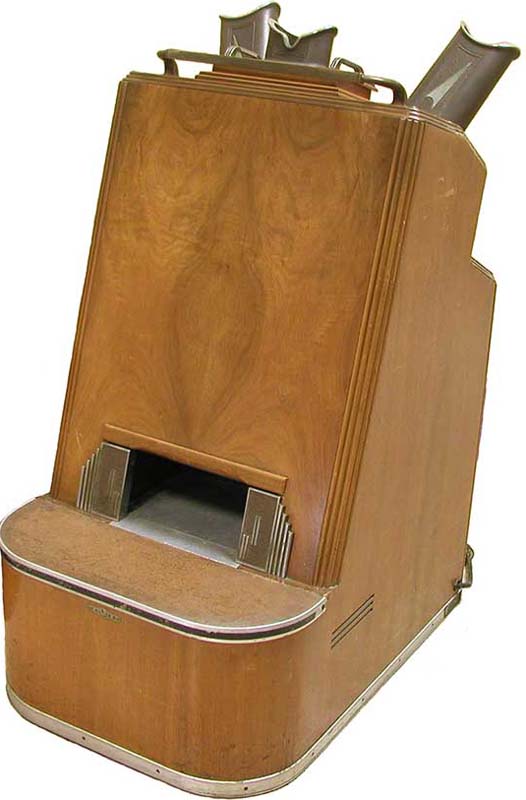
It began with Wilhelm Röntgen discovered X-Rays in 1895. A push from the military during World War I helped establish the fluoroscope for shoe fitting.
Allison Marsh wrote, "Before long, two companies emerged as the leading producers of shoe-fitting fluoroscopes: the Pedoscope Co. in England and X-Ray Shoe Fitter, Inc. in the United States. The basic design included a large wooden cabinet with an X-ray tube in its base and a slot where customers would place their shoe-clad feet. When the sales clerk flipped the switch to activate the X-ray stream, the customer could view the image on a fluorescent screen, showing the bones of the feet and the outline of the shoes. The devices usually had three eyepieces so that the clerk, customer, and a third curious onlooker (parent, spouse, sibling) could all view the image simultaneously."
By the early 1950s, an estimated 10,000 machines were operating in the United States, 3,000 in the United Kingdom, and 1,000 in Canada.
Concern about the radiation danger from these machines eventually caused the machines to fall from favor. By the 1960s, you'd be hard-pressed to find any X-Ray Shoe Fitters in U.S. shoe stores. (posted 11/23/20, permalink)
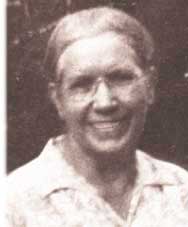 Happy Birthday, Grandmom: The only grandmother I ever knew (my other one, Delia, died a year before I was born) had her birthday today. Happy Birthday, Grandmom: The only grandmother I ever knew (my other one, Delia, died a year before I was born) had her birthday today.
Ellen was born in 1878, although she always lied about her age and would probably admit to being about 10 to 15 years younger. Born in County Mayo Ireland, she emigrated to the U.S. in 1904 and later married a fellow immigrant from her old village. They worked hard, prospered and raised three children.
When I finally got a car to commute to college - my wonderful grandmother paid for it as a gift. When she gave me the money, I considered buying a new Austin-Healey Sprite or an MG Midget. My parents persuaded me to buy a Volkswagen Beetle instead. Good thing that they did - the Beetle was dead-bang reliable. I'm sure the Sprite would have been a nightmare to own and keep running.
Having a car was a good thing; it cut my round-trip commute time by two hours each day. What precipitated the car gift was a family argument over cars. I had saved a couple of hundred bucks and was going to buy a very-much-used $125 Messerschmitt two-seater bubble-car as personal transport. My parents were very opposed - not safe, etc., etc. I said that I was buying the damned thing anyway because I wasn't going to take #@!%* public transport anymore - too time-consuming.
 Finally, my kindly grandmother broke in and said, "Stop yelling - I'll buy him a car." (See ... it pays to be the favorite grandchild!) And that's how I got my new 1963 red Volkswagen Beetle, so I could drive to college rather than take public transit. (Mass transit is not nearly as good as transportation utopians would have you believe. I used to take a bus, the elevated, a trolley and a train to get to Villanova.) Finally, my kindly grandmother broke in and said, "Stop yelling - I'll buy him a car." (See ... it pays to be the favorite grandchild!) And that's how I got my new 1963 red Volkswagen Beetle, so I could drive to college rather than take public transit. (Mass transit is not nearly as good as transportation utopians would have you believe. I used to take a bus, the elevated, a trolley and a train to get to Villanova.)
Following the family tradition, my wife and I bought our grandson his first car in 2015.
My favorite story about my grandmother involves a Seinfeldian dating situation:
As a teenager, I was planning to break-up with a girl I was seeing, when her father suddenly died. As the Still-Designated Boyfriend, I was required - by social norms - to put in an appearance and pay my respects.
As I was leaving the house to go to the viewing, my grandmother saw me all dressed up, called me over and said, "Have a good time at the dance," as she slipped $10 into my hand.
Thanks for everything, grandmom. Sixty-plus years later, I'm still having a good time at the dance. (posted 11/12/20, permalink)
When People Dined In Boxcars: Victoria Station was a chain of railroad-themed steakhouse restaurants. The first one opened in 1969 and was a 158-seat restaurant located on the Embarcadero at Broadway in San Francisco. It was constructed out of five boxcars and two cabooses around a central lobby-service area. The theme of the restaurant was very loosely based on London's Victoria Station. On the "entry platform" to each restaurant was a London-style phone booth.
Prime rib was the featured item on a limited menu that included steaks, barbecued beef ribs, and shrimp done in a variation of scampi style known as "Shrimp Victoria." At the peak of its popularity in the 1970s, the chain had 100 locations in the United States. The firm filed for bankruptcy in 1986.
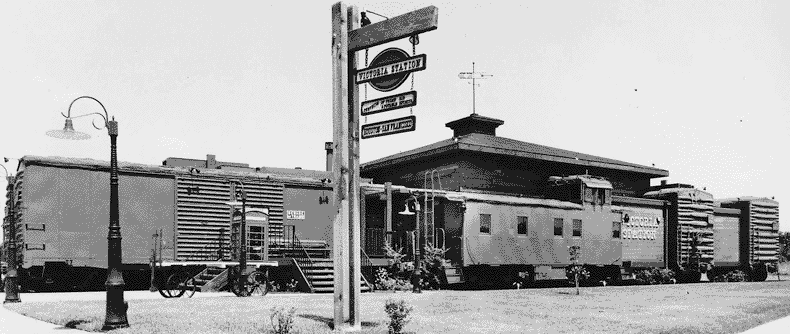
There was one on SW Macadam Avenue in Portland - it opened in 1973 and I dined there in the early '80s. Some meals were served in an old Burlington Northern caboose. I also remember dining at one located at the northeast corner of Grant Avenue and Roosevelt Blvd. in NE Philadelphia. There was also one on Route 70 in Cherry Hill, NJ, which was demolished and is now the site of an Audi dealership - a car dealer I also visited.
Here's some obscure trivia: Legendary film director Alfred Hitchcock flipped the railroad switch for the official opening of Victoria Station Universal City, on May 2, 1977. That restaurant included a funicular which carried patrons 600 feet up from the lower parking lot.
The real Victoria station, also known as London Victoria, is a central London railway terminus and connected London Underground station. It opened in 1860. I took a train from Victoria Station during my first trip to London in 1974. 85 million people transit through Victoria Station every year. (posted 11/10/20, permalink)
Ave Atque Vale: It is with sadness that I announce the passing of Dr. Henry J. Gambino. He died in Doylestown, PA a few months ago after a long battle with Parkinson's and the effects of a stroke he suffered five year ago. His wife, Maureen, preceded him in death a couple of months earlier. She was 77.
Dr. Gambino was a good friend and a brilliant guy. Harry (as his friends called him) was the author of several books, including 'Argomania: A Look At Argus Cameras And The Company That Made Them' and 'Waters of the World'.
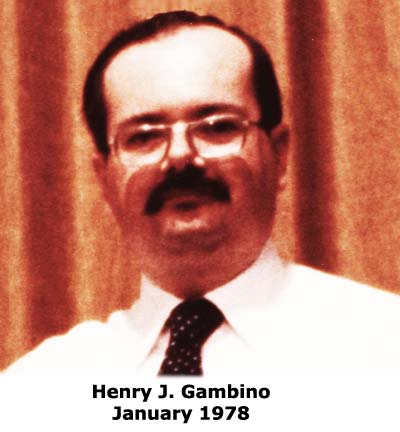
Born in 1939, Harry worked at Rohm and Haas' Bridesburg chemical plant in Philadelphia while getting his college degree in night school. He served in the U.S. Army in Korea, returning to Philadelphia, R&H and night school for a Masters Degree. Harry eventually acquired a PhD in his spare time.
x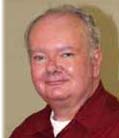 He received several promotions and eventually became editor of R&H's house organ magazine, the Reporter. After 52 years of publication, the Reporter ended in 1995. Harry was one of only three editors of the in-house publication. Since R&H products were sold worldwide, Harry traveled to many continents in search of interesting stories. In addition to his writing abilities, he was an accomplished photographer and took almost all of the photos used in the magazine during his tenure. He was also involved in producing trade shows and exhibits for the company. He also worked in the Advertising Department. He received several promotions and eventually became editor of R&H's house organ magazine, the Reporter. After 52 years of publication, the Reporter ended in 1995. Harry was one of only three editors of the in-house publication. Since R&H products were sold worldwide, Harry traveled to many continents in search of interesting stories. In addition to his writing abilities, he was an accomplished photographer and took almost all of the photos used in the magazine during his tenure. He was also involved in producing trade shows and exhibits for the company. He also worked in the Advertising Department.
Harry's hobbies and interests included fine wines, hunting, flying, collecting antique cameras and firearms. He was also a member of Mensa International. Harry and Maureen shared a love of opera and were members of the Philadelphia Opera Society. Harry made many friends over his life and was generous with his time and knowledge.
He is survived by two children. RIP. (posted 10/29/20, permalink)
The Dreaded Wuhan Flu: I have created a new page listing postings, data, graphs and other information about the China virus in reverse chronological order. It is interesting to compare early reports and assumptions with later information.
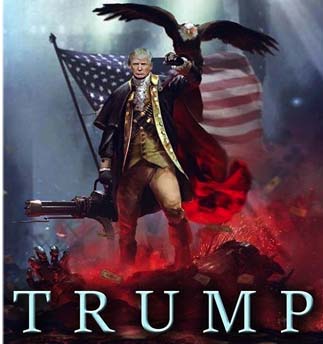 The Case For Reelecting Donald J. Trump: I've been paying attention to politics for over 60 years. I have never seen a president who has accomplished so much in such a short time. As Donald Trump himself likes to say, "I've done more in 47 months than Joe Biden has done in 47 years." The Case For Reelecting Donald J. Trump: I've been paying attention to politics for over 60 years. I have never seen a president who has accomplished so much in such a short time. As Donald Trump himself likes to say, "I've done more in 47 months than Joe Biden has done in 47 years."
Here are some examples of his accomplishments:
• President Trump has put two - probably three - justices on the Supreme Court and made over 200 judicial appointments. The Constitution has been buttressed. He honored his promise to nominate judges who will apply the law rather than make it up. In response, leftists targeted Judge Brett Kavanaugh in a sleazy attempted character assassination. Mr. Trump stood firm until Judge Kavanaugh became Justice Kavanaugh. Time and against all odds, Donald Trump fights … and wins.
• Donald Trump 'Made Business Great Again' by cutting taxes and eliminating burdensome regulations (the largest cut since Ronald Reagan's Presidency - and Reagan had two terms to do it), creating jobs. Across the federal bureaucracy, Mr. Trump has slashed regulatory red tape. Those initiatives returned to the people their freedom from unelected bureaucrats. They also supercharge innovation and economic development. Donald Trump is also bringing back manufacturing to America.
• Trump cleaned up the corrupt and inefficient Veterans Administration.
• Donald Trump decimated ISIS and pulled America out of the awful Iran deal. He took down key terrorist leaders - Abu Bakr al-Baghdadi was brought to justice as well as the Iranian terror leader, General Soleimani - and he is bringing peace to the Middle East. President Trump solidified ties with Israel, and facilitated a historic peace deal between Israel and the United Arab Emirate and Bahrain. His administration has also made Christian persecution worldwide a top priority with the State Department instituting the Ministerial to Advance Religious Freedom, the first of its kind.
• President Trump has created relative peace on the Korean Peninsula. Trump was not able to get Kim Jong-un to give up nuclear weapons in his first term, but no US President has ever done more or gone father to make it happen. There have been no new wars started under this president. Nor any of those useless "six-way talks."
• The president has successfully replaced NAFTA with Mexican and Canadian trade deals that are more favorable to the U.S.
• Early on, Trump pulled out of the disastrous and unworkable Paris Climate Accord. By some estimates, this Accord would have cost us 2.7 million jobs and blocked the development of clean coal. Interestingly, the U.S. has cut its carbon emissions, often at a rate superior to those nations still adhering to the Paris climate accord targets. Trump has also made America's NATO allies pay more for their share in the costs of a common defense. The savings for the United States are better directed to domestic use.
• President Trump revised the Food Stamp Program, tightening work requirements. As Agriculture Secretary Sonny Perdue said, the SNAP program, "was never intended to be a way of life."
• As promised, President Trump built the wall. Over 360 miles have been constructed to date. (450 miles of wall will be completed by year's end.) He ended catch-and-release of illegal aliens.. He established a Remain In Mexico order to discourage fake asylum seekers.
• Under Donald Trump's leadership, the United States has become the largest oil-producing nation on earth. The benefit to our economy and national security is immeasurable. The United States is now energy self-sufficient.
• Early on, Donald Trump eliminated the costly and unfair Obamacare Individual Mandate. He also got the Little Sisters of the Poor off the Obamacare hook. Barack Obama tried to force the nuns as well as pro-life small businesses and organizations to fund birth control and abortion-inducing drugs.
• In 2019, some 34 million Americans lived in poverty, a decline of 4.2 million from 2018. The poverty rate fell from 11.8% in 2018 to 10.5%, the lowest level since estimates were first published in 1959. Real (inflation-adjusted) median household income last year rose 6.8% from $64,324 in 2018 to $68,703.
Lower- and middle-income Americans gained ground in President Donald Trump's first-term economy, while upper-income Americans gained the most under President Barack Obama, according to a survey by the Federal Reserve banking system. Blacks have enjoyed unprecedented economic progress. Their record-setting progress exceeds any time since economists started recording such data.
• President Trump has been nominated by three Nobel Prize committee members for the Nobel Peace Prize.
• Donald Trump went against the experts to close travel from China quickly at the beginning of the Wuhan pandemic and has been proved right. My personal opinion is that no one else could have done better than Donald Trump in these unprecedented times. He has responded swiftly and forcefully in handling the virus, protecting citizens and utilizing resources to produce needed medical equipment and a fast-track vaccine program. Do not believe the liberal hype.
Remember that when Trump restricted flights from China on January 31st, the very next day Joe Biden criticized the president's "hysteria" and "xenophobia." More recently, Biden has flipped his position, vowing to "shut down" the entire country in response to the pandemic if necessary.
Consider this: New York had far-and-away the most severe mortality from the China virus, thanks to the stupid, murderous policies of Governor Andrew Cuomo. His decision to forcibly remove elderly virus patients out of hospitals and back to nursing homes, devastated the senior population. He claimed his action was to open up hospital beds but the claim is specious in light of the Trump Administration converting the Javits Center into a hospital and docking a large-capacity hospital ship in New York Harbor. These facilities, as well as the one set up by Franklin Graham's charitable organization were mostly unused by New York. Meanwhile nursing homes were stuffed with cases, causing the virus to spread rapidly and savagely to vulnerable elderly people.
• President Trump has stood up to China - the first president to do so. He has punished them economically and is moving key U.S. vendors out of China. He realizes that China is not our friend. They are a unethical competitor and our biggest potential threat militarily. Meanwhile, Biden's family is on China's payroll.
• Trump has endeavored to fulfill every promise he pledged to voters. Trump is consistently and unapologetically pro-American.
Finally, ask yourself, "Do I really want the country run by the same party that runs NYC, San Francisco, Seattle, Portland, Chicago, Philadelphia and Baltimore?" The Democrat vision for America is one of joyless, fascist control with draconian rules and regulations - combined with a desire to capriciously shut down businesses at will with top-down commands reminiscent of socialist empires. Do you want a feeble-brained Biden as figurehead, with smarmy, phony Kamala Harris and her behind-the-scenes gang (Pelosi, Schumer, the Clintons, the Obamas, etc.) running America?
Not me. I'm voting for Donald Trump because he has proven that he is the best man for the job. I hope you will, too. (posted 10/9/20, permalink)
 Sad Anniversary: "The people ride in a hole in the ground. New York, New York - it's a hell of a town!" Sad Anniversary: "The people ride in a hole in the ground. New York, New York - it's a hell of a town!"
Every time I hear those words from the musical 'On The Town', penned by the legendary songwriting duo Betty Comden and Adolph Green for the 1944 Broadway musical about three sailors on a 24-hour leave in New York City (later transformed into a 1949 MGM movie, starring Gene Kelly, Frank Sinatra, Ann Miller and Betty Garrett), the 'hole in the ground' part acts as an aching reminder of that tragic 2001 day in Lower Manhattan when terrorists murdered 3,000 innocent souls and created a ginormous hole.
September 11, 2001 - it was unthinkable and ghastly.
My clock radio went off at 6:00 am (Pacific Time) but there was no top-o-the-hour news report - just continuous jumbled updates about a "small airplane" hitting the North Tower of World Trade Center a few minutes earlier.
I quickly got up, turned on the television and learned that the airplane was a large commercial jet. Then my wife and I watched the second big jet crash into the South Tower. Two airplanes within minutes of each other - it was obvious that this was a terrorist act of some kind. I saw the shocking attacks continue - just after 9:30 am Eastern time, a large American Airlines Boeing 757 passenger jet crashed into the west wall of the Pentagon in Arlington County, VA, killing all 64 people on board, including the five hijackers and six crew, as well as 125 people in the building.
Later, I heard the reports of the big United Airlines Boeing 757 passenger jet crashing in a southwest Pennsylvania field - a failed, human-filled terrorist missile intended for the U.S. Capitol. More innocent victims.
I spent the rest of the day witnessing the grim aftermath unfold.
After three solid days of being glued to the television in one of those 'I Cannot Look; I Cannot Look Away' numbing spirals of horror, my wife and I decided to get out and connect with real live people. So we drove to central Washington state. In those pre-blog days, I recorded this journal entry:
"Just got back from a Lincoln & Continental car club meet in Yakima, Washington. Drove through the heartland - farming communities of Washington/Oregon. Lots of American flags flying from homes, car antennas, pickup beds, etc. Passed a prayer service on the athletic field of the Goldendale (WA) high school - no separation of church and state there.
Ran into a Studebaker driving club along the way - lots of cool old Studies including a bullet-nosed, red 1950 Commander convertible with patriotic red/white/blue bunting. Everyone at the car meet was talking about the events of 9/11 - somberly, but with a positive resolve - "we'll get through this" was the operative feeling."
Well, it's been many years and there have been no other major attacks on U.S. soil. Divine Providence? Perhaps - but God helps those who help themselves.
I think Kathy Shaidle was right when she wrote, "I told you we should have nuked Afghanistan no later than 2:00 pm Eastern, September 11, 2001. ... We did it with Japan, and it worked great."
Shoulda. Coulda. Woulda. But, in the end, we didn't, really. And, along the way - sadly - many brave soldiers gave their lives trying to fix what's wrong with the Middle East.
World War II was the last war we won. We did so because we engaged the 'real' enemy directly. Every war since then has been a proxy war, with us fighting the puppet state of the real enemy. Whenever we fight proxy wars, we don't win.
North Korea was (and still is) a puppet of China. We didn't win the Korean War because we wouldn't attack China.
Vietnam was also a Communist China puppet. We didn't win the Vietnam War because we wouldn't engage China.
Iraq and Afghanistan are puppets of Iran. I wish we'd get together with Israel and nuke Iran - take out their uranium facilities, neuter their military assets. And do some tactical nuking of North Korea's nuclear enrichment labs - they should be easy to find; they're the only places with lights on at night. And then send a postcard to China with a short message: "You may be next." Send one to Vladimir Putin for good measure.
World War I was called "the war to end all wars." Now, we're not even allowed to call any of the current conflicts a "war." It might upset someone. Like that Islamist-enabler Barack Obama or his butt-boy, John Kerry, who are busy making nice with that Evil Empire, Iran.
Sadly, something about America has changed. The outrage and resultant 'get 'er done' attitude has waned.
We have reclaimed the luxury of becoming a bickering, partisan nation again. But Islamic terrorism has neither disappeared nor lost its focus. There is a global jihad being waged against all "infidels" - Americans, Europeans, Russians, Jews, Christians, Buddhists, Hindus and others - in order to re-establish the medieval Islamic global empire.
This is not new; for example, the Middle East has been one ongoing slow-motion anti-Christian Kristallnacht that only seems to be escalating. This jihad shape-shifts, moves from place to place and goes by different names. ISIS is its latest incarnation. It's the same Evil Incarnate. Lucifer with a turban.
America must continue to be vigilant and be ready to defend itself from this violent jihad. On September 11, 2001, America learned that radical Islam is at war with us. It's one we must be prepared to win.
Never forget. (posted 9/10/20, permalink)
How Was Your Labor Day Weekend? I hope it was a good one. We had a very nice one. Our daughter and her husband came over for a visit and a traditional Labor Day cookout - the kind we've been doing for over 50 years. I cooked Don't-Bother-Me Burgers and my wife whipped up her Famous Potato Salad, the closest thing you can find around these parts to the delicious white potato salad once offered by authentic Jewish delis along the mid-Atlantic states.
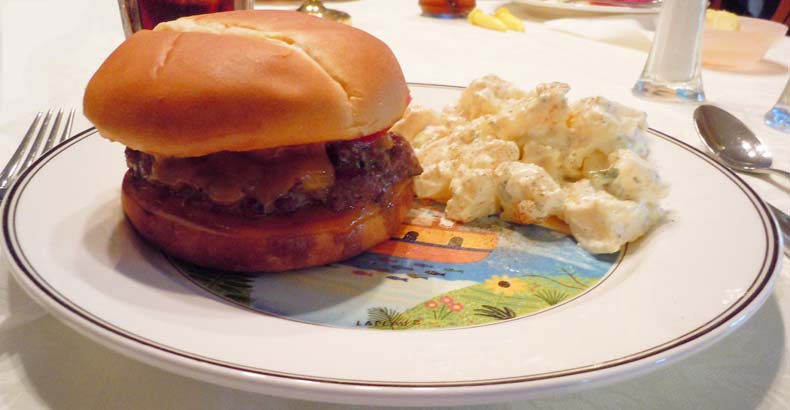
The burger was a six-ounce patty, cooked to achieve maximum juiciness (three minutes per side at about 550 degrees on our outdoor Char-Broil two-burner propane grill) with melted sharp cheddar cheese on both sides - one slice melted on the bottom half of the bun, the other on the burger - served on a toasted brioche bun with a large slice of super-red, juicy heirloom tomato.
On Sunday, I fired up my '39 Plymouth coupe and went for a drive. The temperature was 54 degrees at 8:30 am with bright blue skies with morning fog to the north. The big surprise was that my favorite back road had reopened, which meant I didn't have to drive the busier and longer Hockinson Loop. The road had been closed to replace a bridge, although it wasn't the old narrow one I expected. I finally got a good view of Mt. St. Helens which is now snow-free. It looked like a bare pile of brown dirt.
Turner Classic Movies featured some old rock and roll documentaries. I watched a couple and enjoyed the various nostalgic performances, concluding that there will never be another Little Richard.
All in all, it was a very good weekend. (posted 9/8/20, permalink)
The Knowledge: That's the name of London's rigorous taxi driver test. It demands many years of study to memorize the labyrinthine city’s 25,000 streets and any business or landmark on them. "Matt McCabe logged more than 50,000 miles on motorbike and foot within the city, the equivalent of two circumnavigations of the Earth, while studying for three years to become a London taxi driver."
There are smaller but important versions of The Knowledge in American business. Employees who know how do get things done by skirting the bureaucracy of corporate giants. People - mostly guys over 50 - who have extensive and detailed knowledge about the history of various projects: "We tried exactly the same thing 18 years ago and I have a copy of the data and results."
Then there are go-to people. Employees who will do what they promise and, if anything, over-deliver.
Most companies don't realize how valuable these folks are and, when things get tight, want to force them out, so they can be replaced with cheaper 25 year-olds who know almost nothing.
 In my early days at Rohm & Haas, I was mentored by engineers, tech service people and old-time marketeers who knew the pitfalls of certain product blends, understood the peculiarities of different brands of extruders and injection molding machines and or had million-dollar Rolodexes of key industry contacts and knew them well enough to identify their favorite drink, automobile and golf club. In my early days at Rohm & Haas, I was mentored by engineers, tech service people and old-time marketeers who knew the pitfalls of certain product blends, understood the peculiarities of different brands of extruders and injection molding machines and or had million-dollar Rolodexes of key industry contacts and knew them well enough to identify their favorite drink, automobile and golf club.
In the acrylic plastics field, people like Bob Gardner and Frank Moore became missionaries, getting automakers, appliance manufacturers and other mainstream manufacturing firms to use injection-molded Plexiglas in place of traditional materials. Such men were a generation older than me but I was lucky enough to know them and learn from them.
Both of these gentlemen were offered early retirement packages, so that new blood could replace them. R&H never realized that they were irreplaceable.
 The new Thunderbird of the early 21st Century suffered production delays following troublesome start-up problems. Many blamed the delay on Ford CEO Jac Nasser's 1999 diversity initiative. He once told an audience of Ford employees, "I do not like the sea of white faces (I'm seeing here)." He felt that Ford Motor Company was full of people who were "too old, too male and too white." The new Thunderbird of the early 21st Century suffered production delays following troublesome start-up problems. Many blamed the delay on Ford CEO Jac Nasser's 1999 diversity initiative. He once told an audience of Ford employees, "I do not like the sea of white faces (I'm seeing here)." He felt that Ford Motor Company was full of people who were "too old, too male and too white."
Under Nasser's reign of incompetence, many experienced Ford engineers were forced out and replaced by inexperienced youngsters who fit Nasser's multicultural objectives. These new engineers may have been intelligent but lacked the production floor savvy and bend-the-rules techniques used to de-bug new models on automotive assembly lines.
Ford has had product launch disasters ever since. Nobody knows nuttin'. Consider this: when Ford announced the first Mustang in April, 1964, they had cars made and were ready to deliver orders quickly. Last month, Ford announced the Bronco. Within a few weeks, there was a two-year backlog of orders.
Nordstrom used to have knowledgeable salespeople who could put together a look for anyone. When my Nordstrom guy retired, there was no comparable replacement - just empty suits who knew how to point: "Shoes are over there, suits that way, sports coats here." I took my trade to similarly clueless but lower-priced establishments. Now Nordstrom is closing stores and is in trouble. Somehow, I'm not surprised.
In London, taxi drivers are struggling to survive because of services such as Uber. Uber drivers may know how to get you from the Marriott to Victoria Station but not much else. Don't ask them to find an old book shop specializing in 17th Century editions or to drive to the restaurant run by top chef Marcus Wareing. They don't have The Knowledge, you see.
Sadly, many other institutions, business and otherwise, have trendy Social Media Presence but No Knowledge to impart. (posted 9/1/20, permalink)
Ford-Free Neighborhoods: A while back, Paul Mirengoff of Powerline wrote, "In the early 1960s, less than 20 years after the end of World War II, a hot topic in the Jewish community was: should a Jew buy a Volkswagen? I never discussed the matter with my parents, but their answer must have been in the affirmative because my mother ended up driving one, and I don't think she stole it."
Growing up in 1950s Philadelphia, I never saw a Ford product in a Jewish neighborhood. I didn't see many Chryslers, either. But there ware lots of Cadillacs and Buicks parked on the streets.

If my memory serves me correctly, in the 1940s & '50s, Jews represented about 7% of the overall U.S. population. But, because of hiring prejudices, many Jews sought either professional status (doctors, lawyers) and opened their own practices or established their own businesses. Because of the tax laws, many purchased luxury cars as a 'business expense'. Thus, their impact on the luxury car market was far greater than population statistics would indicate. Before the 1970s, most Jews wouldn't purchase Ford products due to Henry Ford's well-known anti-Semitic views, even though ol' Henry died in 1947. I don't remember seeing a single Lincoln in the Jewish neighborhoods I walked or drove through.
All of that had changed by the 1970s. Jewish neighborhoods dissolved as people moved from city enclaves to the suburbs where prejudices were diminished (or better-hidden). In 1973, we lived across the street from a physician and his wife. They were very nice people, both Jewish, and drove matching Oldsmobile Toronados. Inexplicably, in the '70s, many prejudicially-sensitive Jews were buying Mercedes-Benzes for themselves and VW Beetles for their college-age children. (German makers of Nazi staff cars and KdF Wagens didn't seem to offend them.) And Jerry Seinfeld has a large collection of Porsches. Go figure. (posted 8/14/20, permalink)
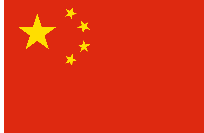 Was The Wuhan Flu Really An 'Accident'? John Hinderaker at Powerline asked: "If you ran the Chinese Communist Party, what would your number one strategic goal have been in late 2019? Undoubtedly, to get rid of China's nemesis, Donald Trump, and replace him with Beijing Joe Biden. How far would China's rulers have gone to achieve that goal? Look what they have done to get rid of the Uighurs, a minor annoyance." Was The Wuhan Flu Really An 'Accident'? John Hinderaker at Powerline asked: "If you ran the Chinese Communist Party, what would your number one strategic goal have been in late 2019? Undoubtedly, to get rid of China's nemesis, Donald Trump, and replace him with Beijing Joe Biden. How far would China's rulers have gone to achieve that goal? Look what they have done to get rid of the Uighurs, a minor annoyance."
"Could the Chinese have deliberately arranged for the worldwide dissemination of the Wuhan virus? Yes, rather easily. They could have created the virus, too, but that isn't necessary. Once the virus escaped from a laboratory in Wuhan, by means unknown, the rest was probably inevitable.
Of course, the virus did some damage within China, but nowhere near enough to pose a threat to the regime. And to the extent that there was collateral damage in Europe and elsewhere around the world, such damage, from the CCP's point of view, was a helpful distraction at a time when China is building up its armed forces and extending its military footprint across Asia.
Does anyone think China's rulers are either too inept or too principled to unleash the Wuhan virus on purpose? If so, why? They have done worse. And here, they would have been playing for enormous stakes – restoration of the pro-China, globalist regime that preceded Trump's America First rebellion. Hardly any price would have been too much to pay.
And, having watched the first three years of the Trump administration unfold, China's rulers could well have calculated that a pandemic originating in their homeland stood a good chance of reshaping America's electoral landscape. The desperate Democrats and their press would blame the president and his administration for the disease – something that has never occurred before in American history, but was sure to happen this time. If the Chinese did seek to influence our presidential race, they were successful. President Trump has gone from being a prohibitive favorite in January to an underdog today, and the reason is the Wuhan virus." Sounds plausible to me.
James Woods tweeted what many of us have been wondering: "It has been widely suggested that the coronavirus was developed in the Wuhan Virology Lab in Wuhan, China and accidentally leaked into the population. Pure speculation, but if true, this question remains: what was the intended use for this "designer" virus in the first place?" Good question. (posted 8/06/20, permalink)
Bonomo's Turkish Taffy: It was invented in 1912 by Herman Herer, an immigrant Austrian candy maker in New York. No one knows why he named it Turkish Taffy. In 1936, the Bonomo family of Coney Island acquired the product and popularized it as Bonomo's Turkish Taffy. After a battle in the United States Court of Customs & Patents, the Bonomo Family trademarked the terms 'Bonomo's Turkish Taffy' and 'Turkish Taffy' in 1946.
The candy soon became a national favorite and, in 1972, Tootsie Roll Industries purchased the rights to Bonomo's Turkish Taffy. Shortly after acquiring it, Tootsie Roll changed the sixty-year old tried-and-true "smack-it crack-it" formula to a soft taffy. The firm dropped the name 'Turkish Taffy' and changed the ingredients, packaging, and shape. Eventually, the product was renamed 'Soft and Chewy TootsieTaffy'. The revised product flopped and Tootsie discontinued it.
The original 1950s-era Bonomo's Turkish Taffy was revived in 2010 by a couple of entrepreneurs who formed Bonomo Turkish Taffy, LLC. The product is now made in York, PA and offered in vanilla, chocolate, strawberry and banana flavors.
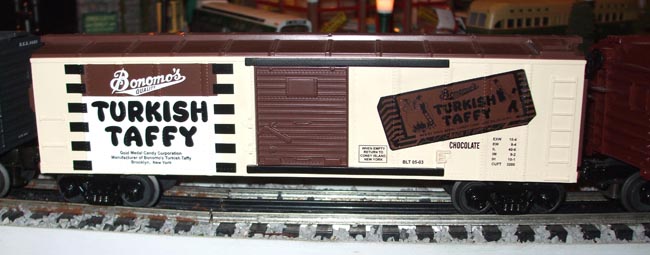
Bonomo's was a staple in the candy rack when I was growing up. You could chill a bar in the refrigerator and then break the embrittled candy into a bunch of edible pieces simply by crack it against a kitchen counter. Or you could carry it around in your pocket for a while and it would soften into a chewable taffied mess. I have an O-gauge Bonomo's Turkish Taffy boxcar which I run on my model train layout at Christmas time. (posted 6/11/20, permalink)
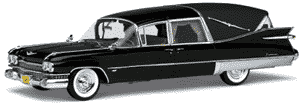 Second Bananas: Versatile actor Richard Herd has died at age 87. He had a long and successful career - you may remember him as George Costanza's boss, Mr. Willhelm, of the New York Yankees on 'Seinfeld'. In the 1970s, he did insurance company commercials. While he was a successful actor, he always reminded me of the guy they'd pick when Academy Award winner Karl Malden wasn't available. Second Bananas: Versatile actor Richard Herd has died at age 87. He had a long and successful career - you may remember him as George Costanza's boss, Mr. Willhelm, of the New York Yankees on 'Seinfeld'. In the 1970s, he did insurance company commercials. While he was a successful actor, he always reminded me of the guy they'd pick when Academy Award winner Karl Malden wasn't available.
As I thought more about it, I came to the realization that every product (including actors) has a first-class versus also-ran brand:
• Italian sports cars: Ferrari vs. Maserati
• cookies: Oreo vs. Hydrox
• soda pop: Seven Up vs. Mountain Dew
• '40s passenger trains: Santa Fe's Super Chief vs. Union Pacific's City of Los Angeles
• '50s airlines: Pan American (or TWA) vs. Allegheny (or Mohawk)
• '60s cigarettes: Marlboro vs. L&M
• '70s Dress-For-Success shoes: Johnson & Murphy vs. Florsheim
In the cookie world, Hydrox deserves better but the public has spoken. Although Hydrox creme-filled chocolate sandwich cookies were introduced four years before Oreo cookies, Oreo is now the best-selling cookie brand in the United States.
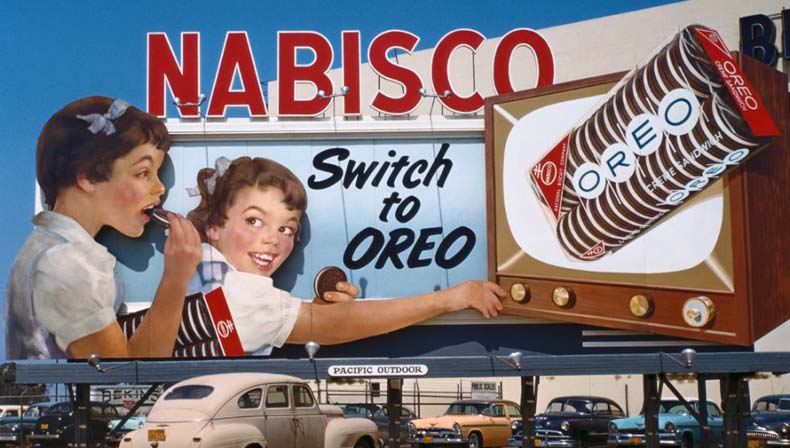
Hydrox debuted in 1908 and was manufactured by Sunshine Biscuits. Sunshine was purchased by Keebler in 1996, and in 1999, Keebler replaced Hydrox with a similar but reformulated product named Droxies. Keebler was acquired by Kellogg's in 2001. Kellogg's removed Droxies from the market in 2003.
After Leaf Brands acquired Hydrox in 2015, the company rolled back the formula to get rid of the high fructose corn syrup, replacing it with real cane sugar and removed the hydrogenated oils as well. So, you can still buy Hydrox, if you want.
Leaf claims that Hydrox have always been less sweet and crispier than Oreos. Oreo may be the best selling cookie brand in the United States, but a lot of Oreos are imported from Salinas, Mexico. Oreos were originally developed by Nabisco (formerly National Biscuit Co.), now a division of Mondelez International.
As for actors, Hollywood will have to find someone else to play those stern, authoritative characters - Herd and Malden are both dead. (posted 5/28/20, permalink)
Reptile Management: Recently, Jack Baruth explained the term Lizard People and their role in business, politics and society. He posits that "virtually everyone in our country's "one percent" is at least a sociopath and possibly a psychopath." He referred to "all those people who earn six or seven figures in ill-defined, completely unproductive jobs. … The people who sit on eight corporate boards and nobody knows why. The CEOs who shipped jobs overseas to make a quarterly earnings call look good, the people at Boeing who managed to trash the world's best brand in a matter of years." Think of a mix of Dilbert's pointy-haired boss, Catbert and Dogbert.
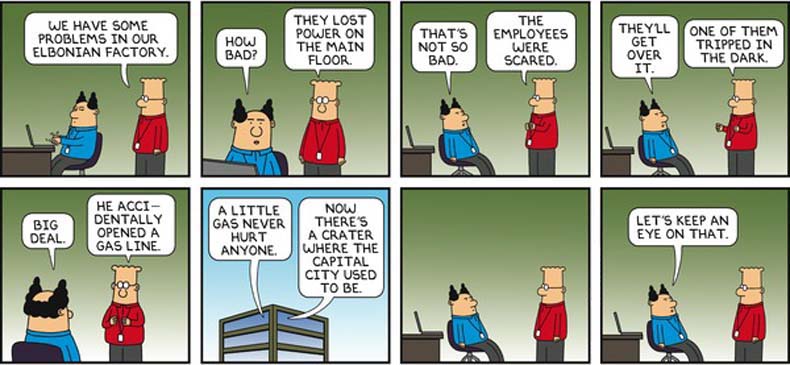
The name Lizard People may be new but there have always been jerk managers who put their personal and career interests ahead of their employer's. Or the public's. Here are some examples:
• During my time at Uniroyal, there was Lenny the Destroyer, who helped wreck the Philadelphia Division.
• At Rohm & Haas Co., I remember George the Doofus, Al the Snake, Get-Me-Laid Bob, the Machiavellian Dr. P, It's-All-About-Me Dave and so many more. Including former CEO Raj Gupta, who now serves on the boards of Hewlett-Packard, The Vanguard Group, Delphi Automotive, Tyco International, Avantor Performance Materials, and IRI Symphony. I don't know him personally but some of my old R&H buddies (former coworkers, now retired) have laid the blame for the company's demise on Mr. Gupta, who took over the reins in '99. One wrote, "Well, Gupta did it. Now that he's sold off businesses, he's sold the entire company. ... If this doesn't have Mr. Haas (Otto Haas, the founder) spinning in his grave, nothing will."
• Most congress critters fall into the Lizard People category, especially John Kerry, Mitt Romney, Barack Obama, Hillary Clinton and her hubby Bill, Nancy Pelosi, Vince Fumo, Ted Kennedy, Arlen Specter and David Wu.
Rod Dreher wrote, "Vanity is the most conspicuous characteristic of US Senators en bloc, nourished by deferential acolytes and often expressed in loutish sexual advances to staffers, interns and the like."
• Ford Motor Company's Jim Hackett may go down in history as the worst CEO Ford has ever had (Henry I during his crazy, senile years not included).
• As to bad top managers at General Motors, there are just too many to list from Roger Smith onward.
• In the art world, there was that untalented drunk and con artist, Thomas Kincade.
• Carly Fiorina wrecked great and not so great companies (including HP, Compaq, Digital and Lucent) before HP canned her. Carly got a big payoff - a $21.4 million severance package. And, between fiscal 1999 and 2003, Fiorina was paid $159 million in cash, stock, benefits and options. We should all be so lucky. HP was so pissed at Carly that they banished her corporate ride - a tricked-out, candy apple red Cadillac Escalade - to as far from California headquarters as possible. It became the courier vehicle at HP's Nashua, New Hampshire facility. Outta sight - outta mind.
• Ginni Rometty, who reigned as IBM CEO from 2012 to 2020, is blamed by many for the company's present state as a commodity cloud storage peddler and Indian call-center service provider. But, to be fair, IBM's problems started back in the 1980s, when it ceded its business market to Dell and Microsoft.
• As we witness slow, painful death of once-great Boeing, I'm told that much of its decline was caused by former CEO Dennis Muilenburg and his team. Muilenburg resigned in 2019.
• CNN's Jeff Zucker has turned a dominant, once-reputable news outlet into an unwatchable joke.
• At first, Michael Eisner and his team were brought aboard to rescue Disney. But Eisner's massive ego was responsible for many of the weird ideas like the Swan and Dolphin hotels that are too tall and destroyed sight lines to attractions. He removed many stockholder perks and discounts and the company eventually tanked during his 21-year reign of arrogance and viciousness.
• Fifty-some years ago, General Electric was a real powerhouse of a company, maker of appliances - large and small, turbines, big electric motors, locomotives, mainframe computers, streetlights and Lexan plastic, not some flophouse loser stock priced at seven bucks or so. In 2018, General Electric, once a household name and a venerable maker of almost everything - turbines, jet engines, appliances - small and large, plastics, light bulbs, locomotives and so much more - was removed as a component of the Dow Jones Industrial Average.
Jeff Immelt became CEO of GE in 2001 and began to wreck the company. Immelt was more of an outside CEO, eager to play public statesman in Washington, advising President Barack Obama, giving speeches and collecting awards, and not enough like predecessor Jack Welch, a roll-up-your-sleeves hard-charging guy who reveled in operational details, asked the hard questions, built great teams and terrified competitors. Under Immelt, the company engaged in risky speculation in the finance field far away from its traditional core competencies, while embracing progressive values in its fabled industrial divisions. Get woke … go broke.
• Many PR types are lizards in human skin suits. If you've ever been in business, you've probably met some.
All of the companies I've mentioned employ exceptional people, who work hard and try to improve the products and services each company offers. Peter De Lorenzo calls them True Believers. Unfortunately, their talents and efforts go to waste due to the incompetence and/or mendacity of those above them.
I could go on and on but you get the picture. Tomorrow's hopes rest with maverick entrepreneurs, who kill lizards for sport. Mark Cuban and sometimes-crazy Elon Musk come to mind. I recommend that you read 'Billion Dollar Brand Club: How Dollar Shave Club, Warby Parker and Other Disruptors Are Remaking What We Buy' to find out more about business mavericks. (posted 5/22/20, permalink)
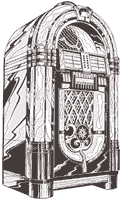 Billy Joel Did This 31 Years Ago: Bob Dylan's success is a mystery to me. He is an ugly, pretentious man with an adenoidal frog's voice, singing trite lyrics unintelligibly. He has now written and sung a new 17-minute, free-associating poem/song/detrius, mixing pop-culture with history and with a particular focus on the Kennedy assassination. Billy Joel Did This 31 Years Ago: Bob Dylan's success is a mystery to me. He is an ugly, pretentious man with an adenoidal frog's voice, singing trite lyrics unintelligibly. He has now written and sung a new 17-minute, free-associating poem/song/detrius, mixing pop-culture with history and with a particular focus on the Kennedy assassination.
Anyone remember 'We Didn't Start The Fire'?' ("JFK, blown away, what else do I have to say?")
Here's an excerpt from Dylan's …. ummmmm … maudlin performance:
"What's new, pussycat? What'd I say?
I said the soul of a nation been torn away
And it's beginning to go into a slow decay
And that it's thirty-six hours past Judgment Day
Wolfman Jack, he's speaking in tongues
He's going on and on at the top of his lungs
Play me a song, Mr. Wolfman Jack
Play it for me in my long Cadillac
Play me that 'Only the Good Die Young'
Take me to the place Tom Dooley was hung
Play 'St. James Infirmary' and the Court of King James
If you want to remember, you better write down the names …."
What a downer of a song. At least Billy Joel's ditty had a danceable beat. And was much shorter - less than 5 minutes in duration.
Hey - I just wrote a Billy Joel-style song about the 1940s:
"Aldolf Hitler, Churchill
Fighting Japs on Pork Chop Hill
Bing Crosby, Fall of Rome
Some GIs are heading home.
FDR, had a stroke. I'm gonna drink a nickel Coke."
And that, folks, was the Forties in compressed form. (posted 4/9/20, permalink)
 RIP, Playboy: The pseudo-intellectual nudie magazine, founded by Hugh Hefner in 1953, will "no longer publish a printed edition, citing coronavirus supply chain woes that have only served to exacerbate its already sagging newsstand sales." I've never seen 'Playboy' and 'sagging' in the same sentence before. RIP, Playboy: The pseudo-intellectual nudie magazine, founded by Hugh Hefner in 1953, will "no longer publish a printed edition, citing coronavirus supply chain woes that have only served to exacerbate its already sagging newsstand sales." I've never seen 'Playboy' and 'sagging' in the same sentence before.
"The iconic magazine was already on the decline prior to the coronavirus pandemic as porn has proliferated online. It was still being published monthly as recently as 2017, but was scaled back to a quarterly mag without ads in early 2019. The spring 2020 now hitting newsstands will be its last."
"A nude Marilyn Monroe was featured in the very first issue of Playboy, which Hefner famously did not date when it debuted in 1953 because he said he was unsure he'd have the money to produce a second issue. At its height, it sold over 7 million copies a month on newsstands."
My introduction to Playboy was at the tender age of 12 at Frank's Barber Shop at Foulkrod and Penn Streets - about two blocks north of the Margaret-Orthodox El station in Philadelphia. Frank also offered issues of Sunshine and Health as reading material. S&H was a nudist magazine; in all the photos, the nekkid people always seemed to be holding beach balls to strategically cover (as the Brits say) "the naughty bits." I have never seen so many beach balls in one place. As a youngster, I figured that nudists must have accounted for 80% of beach ball purchases in the U.S.
By the way, I also enjoyed the cartoons in Playboy:
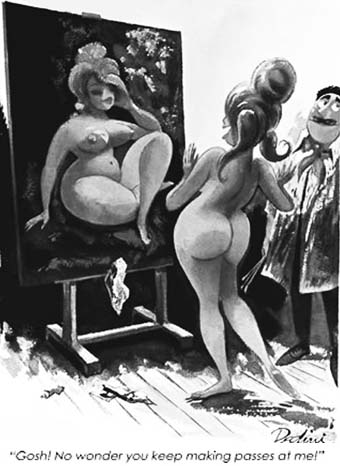
Frank's reading material also included True Detective and Confidential - a sleazy, tell-all magazine which made-up most of its salacious stories - featuring blaring, outrageous headlines on the order of: "Perry Como Is Really A Negro!" So many people sued Confidential for slander that it finally went out of business in the late 1950s or early 1960s.
After we moved to New Jersey, I still went to Frank to get my hair cut. Even after we moved to Oregon, I'd stop in for a trim any time I traveled back to Philly. Then, on one trip in the early 1980s, I found the shop boarded-up. I inquired at the place next door and found out that Frank had died. Too bad; he was one of the best barbers I've ever known.
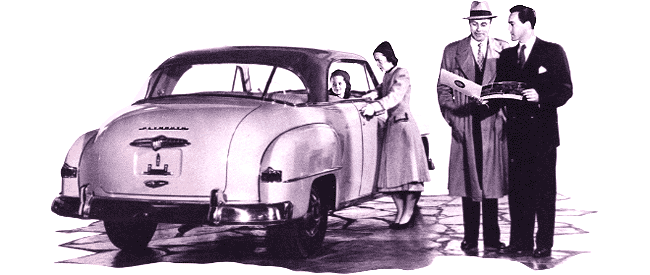
Frank was a car guy and owned several 1949-51 Plymouths - the blocky and bland ones. I remember one of them was painted a bilious green color. Why he collected these particular models was never made clear. "I just like 'em," Frank used to tell me.
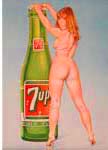 My good friend and car buddy, Ray Lukas, still subscribed to Playboy magazine right to the end and was once a Playboy Club keyholder. He shared this memory: "I have been in Playboy Clubs in Chicago, Boston and San Francisco. The girls were beautiful. The bills were padded. The food quality varied. When I married in 1979, we both were working. The next weekend, we went to a medical conference in Chicago. We studied hard all day. And partied all night. The neatest place we went was the Chicago Playboy Club! My good friend and car buddy, Ray Lukas, still subscribed to Playboy magazine right to the end and was once a Playboy Club keyholder. He shared this memory: "I have been in Playboy Clubs in Chicago, Boston and San Francisco. The girls were beautiful. The bills were padded. The food quality varied. When I married in 1979, we both were working. The next weekend, we went to a medical conference in Chicago. We studied hard all day. And partied all night. The neatest place we went was the Chicago Playboy Club!
We saw Hugh Hefner and his entourage but did not meet them personally. I think Barbi Benton was his main squeeze at the time. The featured singer that night was Lou Rawls backed up by Les McCann's Trio. The restaurant staff even sang "Happy Wedding" to us before the night was out. We stayed there till 2:00 am, took a Playboy limo back to the hotel and I, at least, managed to make class at 7:00 am. I think my total bill for the evening was on the order of $275 including gratuities. But what a hell of a good time! And a great memory."
Those were the days. Farewell, Playboy. (posted 4/3/20, permalink)
Italy's China Problem: I was surprised to learn that there are Chinese sweatshops in Northern Italy.
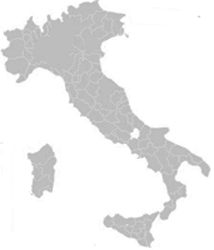 Many companies are using inexpensive immigrant labor to manufacture handbags and other leather goods that bear the coveted "Made in Italy" label, according to a detailed article by D. T. Max in The New Yorker magazine. Consider the Northern Italian town of Prato: "More than 10% of Prato's two hundred thousand legal residents are Chinese. According to Francesco Nannucci, the head of the police's investigative unit in Prato, the city is also home to some ten thousand Chinese people who are there illegally. Prato is believed to have the second-largest Chinese population of any European city, after Paris, and it has the highest proportion of immigrants in Italy, including a large North African population." Many of the Chinese textile and leather bag workers are paid by the piece. "In the Prato area, some six thousand businesses are registered to Chinese citizens and the fashion companies require these Chinese-owned subcontractors to sign confidentiality agreements." That makes specific information hard to come by. Many companies are using inexpensive immigrant labor to manufacture handbags and other leather goods that bear the coveted "Made in Italy" label, according to a detailed article by D. T. Max in The New Yorker magazine. Consider the Northern Italian town of Prato: "More than 10% of Prato's two hundred thousand legal residents are Chinese. According to Francesco Nannucci, the head of the police's investigative unit in Prato, the city is also home to some ten thousand Chinese people who are there illegally. Prato is believed to have the second-largest Chinese population of any European city, after Paris, and it has the highest proportion of immigrants in Italy, including a large North African population." Many of the Chinese textile and leather bag workers are paid by the piece. "In the Prato area, some six thousand businesses are registered to Chinese citizens and the fashion companies require these Chinese-owned subcontractors to sign confidentiality agreements." That makes specific information hard to come by.
"Italy's luxury-fashion industry has long struggled to lower costs without compromising on quality. In the seventies and eighties, the Pratan system of interconnected workshops ran smoothly, but in the nineties, as trade barriers fell around the world, fashion houses saw an opportunity too good to resist. Why not manufacture "Made in Italy" products in Eastern Europe and in China? They would still be designed in Milan or Florence, so the label wouldn't be a complete lie. Reports of the practice leaked out, and the brands found themselves under pressure to market their products more honestly. In 2010, Santo Versace - a politician who is also the chairman of the Versace fashion house - championed a law that contained a very Italian compromise: if two of the steps in the manufacturing process took place in Italy, the item could bear the valuable label. But the famous fashion companies continued to look for ways to make the “Made in Italy” tag mean what it was supposed to mean without forgoing profits."
"Many Italians in Northern Italy have sold their leather goods and textiles companies to China. Italy then allowed 100,000 Chinese workers from Wuhan and Wenzhou to move to Italy to work in these factories, with direct flights between Wuhan and Northern Italy." This continued post-outbreak, so is it any surprise that Northern Italy is now Europe's hotspot for the coronavirus?
The reality is that the Eropean Union has turned a blind eye to vast numbers of illegal Chinese immigrants working in Italian factories. "The 'Open Borders' EU will of course try to keep this under wraps, but reality is, the Chinese Mafia operate Italian textile factories with tens of thousands of illegal immigrants shipping ‘'Made in Italy' goods into China and elsewhere." Including to pricey boutiques in the United States.
In March 2019, "Italy's decision to be the first major European economy to join China's massive investment and infrastructure project, the Belt and Road Initiative, can only exacerbate tensions between Italy and its neighbors."
The story also noted that "China sees the BRI as a way to efficiently and easily export more of its goods to lucrative markets; its critics see the initiative as a vanity project that increases indebtedness among its participating countries. They also complain that the BRI gives Chinese companies unfettered access to other markets and economies, but that its own is still largely closed to foreign investment."
As a result of its Belt and Road Initiative, there are now more than 300,000 Chinese living in Italy. And there is much travel to and from China. "Lombardy and Tuscany are the two regions that saw the most Chinese investment. Nearly a year later, the first Wuhan coronavirus infection case in Italy was reported in the Lombardy region on February 21st. Today, Italy is experiencing the worst coronavirus outbreak outside China, and Lombardy is the hardest-hit region in the country."
As the late Paul Harvey used to say, "And now you know … the rest of the story." (posted 3/20/20, permalink)
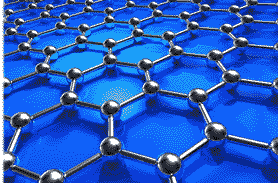 It's A Plastic World Now: Only a few weeks ago, plastic was the whipping boy for all the greenies. Suddenly, the environmental wackos have become as quiet as the songbirds in Rachel Carson's 'Silent Spring'. Could it be because our polymer friends are playing a major role in containing the coronavirus? It's A Plastic World Now: Only a few weeks ago, plastic was the whipping boy for all the greenies. Suddenly, the environmental wackos have become as quiet as the songbirds in Rachel Carson's 'Silent Spring'. Could it be because our polymer friends are playing a major role in containing the coronavirus?
Most of those hazmat suits you see on television are made from Tyvek, a flashspun high-density polyethylene plastic fiber. Some suits are made from Teflon (polytetrafluoroethylene plastic) or PVC (polyvinyl chloride plastic). Booties are made from polypropylene, a widely-used thermoplastic polymer. Surgical face masks are also made with non-woven polypropylene fabric. Face shields are typically made from Uvex (cellulose acetate butyrate plastic, which dates from the 1930s) or Lexan (a polycarbonate thermoplastic).
No one's complaining about plastic straws anymore. And that obnoxious teen, Greta Thunberg, seems to have dropped off the face of the earth. These days, she's seen less often than a Higgs boson particle. Mirabile dictu!
Then there are those oft-demonized plastic bags: "The campaign to eliminate single-use plastic bags at the supermarket could prove deadly during the coronavirus outbreak. It has forced shoppers to switch to reusable tote bags that have proved quite "sustainable" for viruses and bacteria from food. The pathogens can linger for days - and then be spread all over the supermarket, especially at the checkout counter. Researchers have repeatedly demonstrated that the pathogens in the bags are a serious public-health hazard unless grocery shoppers wash the bags regularly, which few people do."
Funny how our priorities and/or sensitivities can make a U-turn almost overnight.
An article in Bloomberg News noted that the virus plays right into the plastics industry's strong suits: disposability and hygiene. "Concerns around food hygiene due to Covid-19 could increase plastic packaging intensity, undoing some of the early progress made by companies … Researchers found the greatest spikes in demand for face masks and the thin film used in plastic wraps."
Plastic products "are actually a boon to overall sustainability, despite being petroleum-based, non-biodegradable, and difficult to recycle. Plastic packaging plays a role in reducing food waste by extending the shelf life of fresh produce from days to over a week. Plastic parts in cars also reduce weight and improve fuel efficiency."
And finally, here's a great headline: 'Climate change alarmists cancel museum die-in because of the coronavirus'.
"Extinction Rebellion DC has cancelled its mass die-in at the Smithsonian National Museum of Natural History because of the COVID-19 pandemic.
Responding to the science and the public health emergency declared in D.C., we feel it would be irresponsible to go ahead with the action." Oh, that big bowl of irony ... it tastes so delicious. (posted 3/18/20, permalink)
More 'Musings' can be found here.
Other Pages Of Interest
copyright 2020 - Joseph M. Sherlock - All applicable rights reserved
Disclaimer
The facts presented on this website are based on my best guesses and my substantially faulty geezer memory. The opinions expressed herein are strictly those of the author and are protected by the U.S. Constitution. Probably.
Spelling, punctuation and syntax errors are cheerfully repaired when I find them; grudgingly fixed when you do.
If I have slandered any brands of automobiles, either expressly or inadvertently, they're most likely crap cars and deserve it. Automobile manufacturers should be aware that they always have the option of trying to change my mind by providing me with vehicles to test drive.
If I have slandered any people or corporations ion this car-centric website, either expressly or inadvertently, they should buy me strong drinks (and an expensive meal) and try to prove to me that they're not the jerks I've portrayed them to be. If you're buying, I'm willing to listen.
Don't be shy - try a bribe. It might help.
|
|